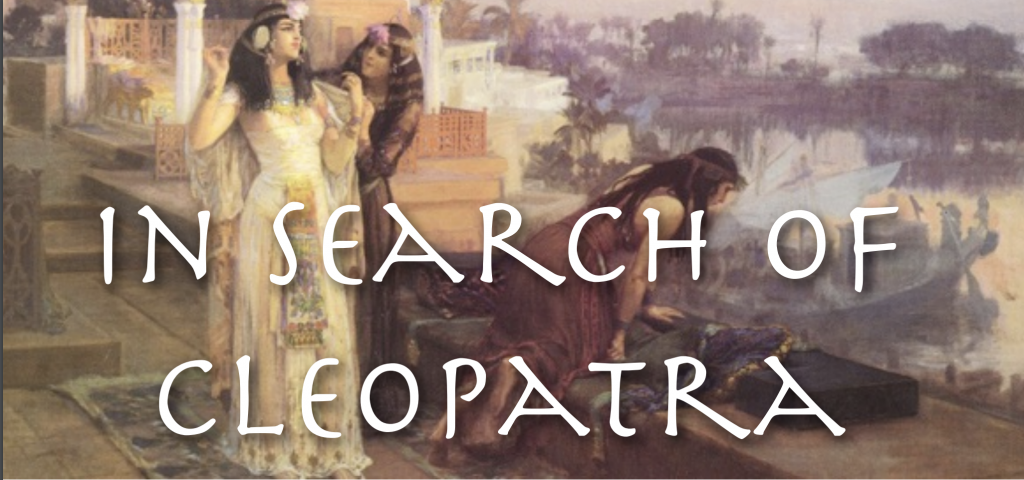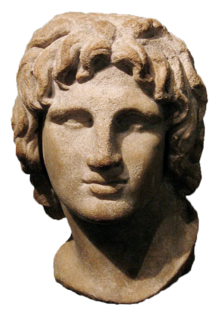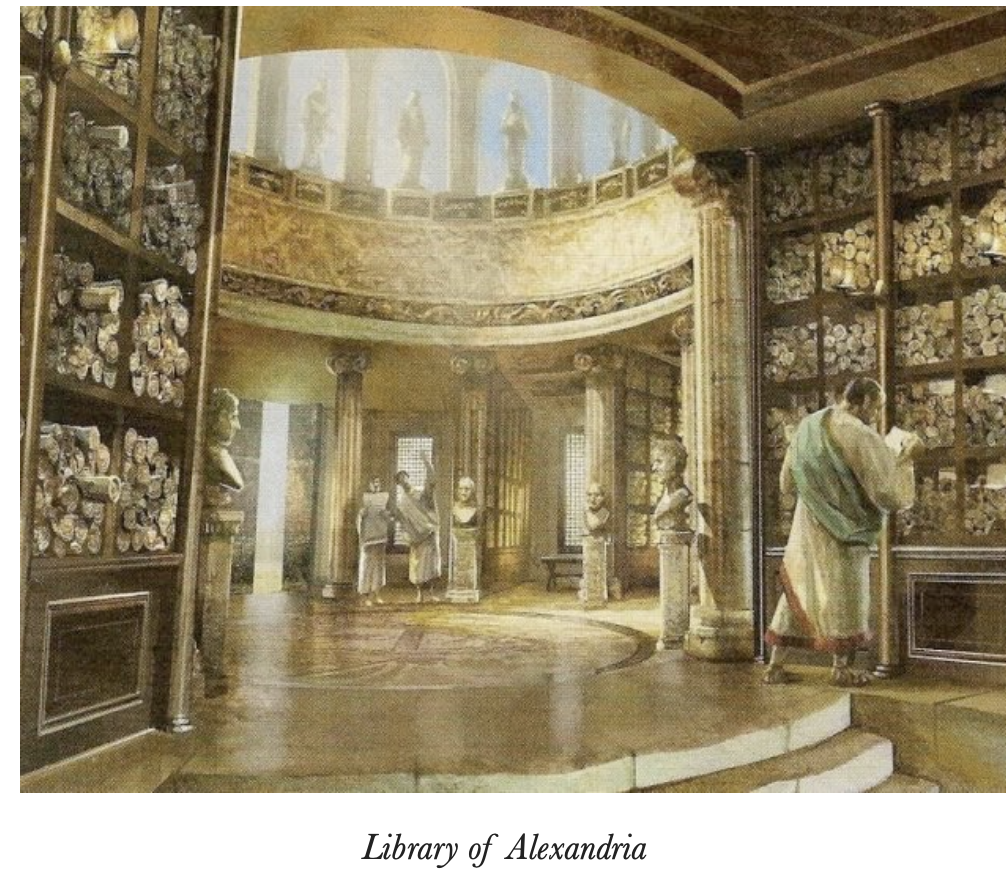
Before apocryphally rolling out of the carpet and into legend, Cleopatra (69 BCE-30 BCE) already had a storied past. The twenty-one-year old and her thirteen-year old brother-husband Ptolemy XIII (62 BCE-47 BCE) ruled together for close to two years before said brother—under the influence of his overly ambitious advisors—successfully banished Cleopatra from Alexandria. Prudently using her mastery of the Egyptian language—the first Ptolemy to do so in the nearly three-hundred-year-old dynasty—Cleopatra mounted an army to defeat Ptolemy. It was only shortly thereafter that she had the legendary encounter with Caesar. Yet most of what has been penned about Cleopatra was drawn after her stars became aligned with those of ancient Rome; written from the decidedly biased perspective of the Romans. Time and again we know Cleopatra as the subversive siren from the corrupted East who seduced two of ancient Rome’s greatest generals.
What could account for so much ire against the Egyptian queen? The truth is that in order to justify an unpopular civil war against his rival Mark Antony (83 BCE-30 BCE), Gaius Ocavius “Octavian” (later Augustus—63 BCE-14 CE) launched first a propaganda campaign then a full-scale war against Egypt by painting Cleopatra as an Eastern harlot who seduced Antony with her blend of depraved sorcery. Octavian’s crusade against her soon took hold in the rank imaginations of the xenophobic and misogynist Romans. In his Odes, Horace calls her a “fatal monster,” Sextus Propertius refers to her as the “whore queen” in Elegies and in Lucan’s Poems she is termed “Egypt’s shame.” Yet what is never mentioned about the Egyptian queen is that she didn’t have a drop of Egyptian blood. In fact, her lineage derived from a Macedonian Greek, celebrated as a hero in ancient Rome, whose military accomplishments were the ambition of every Roman leader.
It is an irony that forasmuch as the Romans glorified Alexander the Great (356 BCE-323 BCE), they heaped an equivalent amount of scorn and disdain on Cleopatra who was not only Alexander’s political heir but may very well have been his biological heir as well. Founding member of the Ptolemaic dynasty, Ptolemy I Soter (367 BCE-83 CE) was one of Alexander’s three most trusted Macedonian generals and by some accounts, his half-brother as well. Although vilified within Greek city states, polygamy was practiced in the Greek kingdom of Macedonia, especially amongst the ruling class. Phillip II (386-336 BCE), Alexander’s father, had several wives and many children; Ptolemy was the son of one of his multiple wives. Alexander even had a sister named Kleopatra, which in Greek means “glory of the father.” Truth told, Cleopatra was a common name amongst queens in Ptolemaic Egypt; Cleopatra, its final queen, was number seven. Alas, Cleopatra’s link to Alexander continued after her demise; the Hellenistic period begins and ends with the deaths of Alexander and Cleopatra.

After Alexander’s death, his empire was divided between his three generals with Ptolemy winning the grand prize of Egypt. Alexandria, founded by Alexander in 331 BCE, had become Egypt’s new Hellenistic capital. Because of the optimal location of Alexandria’s port—midway between the burgeoning metropolis of Rome and the orient—it was transformed into an international market and intellectual mecca almost overnight. During its peak Alexandria was the largest and most affluent city in the world; the upstart, backwater Rome paled in comparison to the glittering marble and jewel-encrusted splendor of Alexandria. Sparing no expense for their shining city by the bay, the early Ptolemies were responsible for commissioning some of the most notable architecture of the ancient world. The Lighthouse of Alexandria, one of the Seven Wonders of the Ancient World, was built on the island of Pharos adjacent to Alexandria, it stood at an indomitable height of more than three hundred and fifty feet—only the pyramids at Giza were higher. Another draw for both Greeks and Romans alike was the sumptuous and much coveted glass enclosed Tomb of Alexander, first on display in the former capital of Memphis then permanently housed in Alexandria. Further, under Ptolemy I the Great Library of Alexandria and its accompanying museum (mouseion-home of the muses) was built. Second to none in the Hellenized world, the transcendent Great Library and Mouseion attracted the best minds of the day with it becoming a mark of distinction to be educated by an Alexandrian scholar. No other library in the world could boast the number of scrolls with estimates ranging from 40,000-400,000. Intellectually gifted with a talent for language—she was fluent in nine of them—it was in this rarified space that Cleopatra flourished.

Even her most ardent detractors begrudgingly praise Cleopatra on her considerable conversational and rhetoric skills. In his Lives of Marcus Antonius Plutarch quips: “Plato speaks of four kinds of flattery, but Cleopatra knew a thousand.” While her sweeping intellect and aptitude for languages was innate, her erudition and rhetoric skills could only have been learned. Though the Greeks kept their daughters in a state of near ignorance, the Ptolemaic females were educated alongside their male counterparts. After all, on account of sibling marriage, Ptolemaic girls stood just as good a chance at governing as their boys. Sibling marriage was a tradition that the Ptolemies continued from their Pharoahic forebears and was used as a means of keeping power amongst the clan by not weakening the Macedonian bloodline; it also helped prevent foreign powers from infiltrating Egypt.
While growing up, Cleopatra didn’t have to look far to find authoritative female role models. Sibling marriage gave Ptolemaic women power they would never have otherwise had; the sister/wives ruled right alongside their brother/husbands in governance. In an era when women were better seen (though rarely in public) than heard, Ptolemaic female rulers were responsible for overseeing public works, building temples, mounting defense and waging war. Moreover, Egypt was a country which was progressive for its time in gender relations. Unlike in Greece, Egyptian women could make their own marriages and once married did not have to defer to their husband’s will. They could divorce, hold property and were able to inherit. All things of which Greek women could only dream.
Though Egyptian women may have been liberated, in Ptolemaic Egypt, queens still needed a male co-regent. Cleopatra’s options were limited. Her choices were her ten-year-old brother, or her even younger brother. Married in name only, Cleopatra ruled as the sole monarch with Ptolemy XIII, as consort for the close to two years after which time he and his counsels had her ousted. Just as she was amassing an army in Syria to take back the throne, a Civil War ensued between Julius Caesar (100 BCE-44 BCE) and Gnaeus Pompeius Magnus or Pompey (106 BCE-48 BCE). After Caesar’s victory at Pharsalus, in order to remain in good graces with the victor, Ptolemy XIII, with the help of his notorious advisors drew up a plan to dispatch their old friend and benefactor Pompey by repeatedly stabbing him as he stepped ashore in Egypt. For this heinous act, Ptolemy XIII landed in the ninth circle of Dante’s Inferno, alongside Judas. Shortly thereafter, upon visiting Egypt, Caesar was presented with Pompey’s decapitated head as a gift which the boy-king thought the Roman dictator would appreciate. Caesar was repulsed and reportedly wept upon seeing the head of his adversary who had once been a close friend and his former son-in-law.

The history of Cleopatra’s activities during this time is murky. Indeed, her story isn’t fully recorded until it aligns with that of the Rome’s. What we do know is that shortly after Caesar lands in Egypt, Cleopatra exhibits all the ingenuity for which she would become famous. Did she first meet Caesar rolled up in a carpet as Plutarch reports? She would have had to do something outrageous as the cards were mightily stacked against her. According to legend, while in a ship she slipped by dark of night through Ptolemy’s impenetrable blockade then hid in the paltry boat of Apollodorus the Sicilian. We’ll never know how he did it, but somehow while Cleopatra was wrapped in a carpet, Apollodorus strode past the probing eyes of countless sentinels who were on the lookout for the diminutive queen, finally presenting his precious cargo into the private quarters of the Roman general himself. There is much speculation about their first encounter. Ever the ladies’ man, Caesar was likely soon smitten by the charismatic and erudite Cleopatra whom he promptly restored to the throne to rule alongside her impetuous and errant brother as their father’s will had dictated. When it was made known to Ptolemy XIII that he would once again be ruling alongside his sister, in a rage, he threw off his crown and ran out of the room in tears—displaying all of his thirteen years of age.
Alas, poor Ptolemy! After his tantrum, he was not much long for the world. He was believed drowned during the prolonged Battle of Alexandria which ensued shortly after Caesar reinstalled Cleopatra to the crown. Ptolemy XIV (61 BCE-44 BCE) soon followed XIII in co-regency, but once Cleopatra produced her (and Caesar’s) male heir and consort—Caesarion or Ptolemy XV (47 BCE-30 BCE), XIV’s time on the planet didn’t fare much longer than his unfortunate brother. It should be noted here that although the Ptolemies were known for many things throughout their nearly three-hundred-year dynasty, familial harmony was not one of them. A long history of bloodlust follows the clan. Even Cleopatra’s own father had her eldest sister, Berenice IV (77 BCE-55 BCE), executed for usurping the throne during his time away in Rome. Notorious for conspiring against her while they were alive, Cleopatra’s three remaining siblings were ultimately all put to rest during her reign.

Cast as a femme fatale by the victor’s propagandists, to this day Cleopatra’s astounding achievements have often been overlooked. When she inherited the throne from her father, she also inherited an Egypt that was a weak client of Rome’s and in substantial debt. Yet in the space of a few short years in a series of clever financial maneuvers she was able to transform Egypt’s debt into surplus and regain Egypt’s status as a power player. Under her aegis, Egypt became a flourishing state once again; Alexandrians, long known for their revolts against her predecessors when times were lean (there were two such insurrections against her father) were sufficiently appeased never to stage a revolt during Cleopatra’s twenty-one-year reign.
Despite Rome being hot on her heels, Cleopatra not only expanded Egypt’s empire to its size at the time of Alexander the Great, she went beyond those borders to Egypt’s size at its pinnacle one thousand years earlier. She transformed Egypt into a world superpower, the entirety of the known world within her grasp. After hers and Antony’s crushing defeat at the Battle of Actium in 31 BCE, bountiful Egypt became the Roman province for which Octavian yearned. Yet for all the Roman ire against Cleopatra, Egypt didn’t soon forget their regal queen whom in life they revered as a deity. For hundreds of years after her death she was still worshipped and even today is celebrated throughout the world as an icon, oftentimes compared to her predecessor and exemplar, Alexander the Great.
Published on Classical Wisdom
